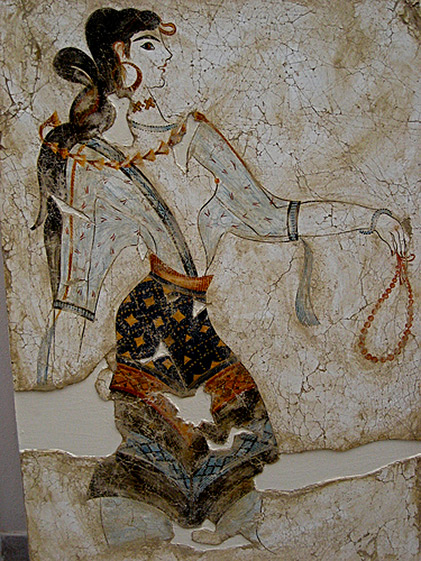
Minoan maiden with prayer beads Fresco
Pottery and wall art from the ancient Minoans:
From around 2700 to 1450 BC, the Minoan civilization flourished as a seafaring and mercantile culture. The vibrant Minos culture was centred around the island of Crete and eventually dominated the Agean region. Along with its exceptionally advantageous position at the intersection of sea routes leading to the countries of the Middle East, its trading contributed to the high flowering of the culture and art of Crete. The Egyptians called the Minoans “the Sea Peoples” and had a fond appreciation for Minoan pottery and ceramics, prized for their innovative shapes and sea-inspired designs. Their vases and jugs were made in fine clay with thin walls and was an outstanding achievement at this time. Historians have learned everything there is to know about the Minoan people through their artwork. Artwork such as paintings, potttery, sculptures, and architectural designs were important to the people of the Minoan civilization in Crete.
Their decorative wares were covered in bold, flowing, rhythmic movements with patterns using linked curvilinear and undulating lines. Minoans painted their pottery decorations on wet plaster, which allowed the pigments of metal to bind to the plaster. However, this required the painter to exercise specific skills that allowed him or her to work within the time constraints imposed by the color on the plaster drying. This type of art encouraged improvisation and personal expression because there was very little time for the painter to create highly detailed art pieces. Flowing broad strokes were favored, which covered the surface more rapidly and gave their art a stylized, abstract appearance.
Minoan pottery was initially decorated with designs in dark, often shiny paint (vitreous slip), in shades of red, brown, and black, on a light surface. Between 1900-1700BC the Kamáres style developed into the most colourful and vibrant style of pottery form and decoration yet seen anywhere. Images were painted on a black-brown background in reds, whites and blues. Sea and shore fauna and flora were the most important source of design. The animals displayed a playful nature and emphasised a flambuoyant liveliness characteristic of Cretean Art. Nowhere else in the art of the ancient world was such a lightness of spirit displayed, compared to the creativity of the Minoans at the height of their power in the early 15th century BC.
From 1700BC their technique of making and handling quartz frit paste had reached a higher standard than any other culture. Many small colourful plaques, figurines and jewelry in blue and polychome were made and exported, along with their pottery, to Egypt and the Levant islands of the Aegean Sea, and also in Asia Minor, Syria, Egypt and even further into the depths of Africa.
Kamares crater banquet vessel with decorative lillies
Phaistos.
Old-Palace period (1800-1700 BC)
Tray with handles and whirling motifs from Phaistos
Minoan pottery — frying pan with characteristic decorative spirals.
Iraklio Museum – Minoan pottery
Bronze female figure Late Minoan.
The Minoans were conquered by the Mycenaeans and this Mycenean octopus pottery from Thissus reflects the influence of the Minoans.
Kamaras libation vessel
Elegant ewer with reed type decoration that creates a pattern of dark and light colours on the surface of the pot.
Example of the decorative mannerism of the Late Neopalatial period, a work by the artist conventionally referred to, as ‘Reed – Painter’ (1450 BC).
Heraklion Museum
Lidded pot from Mochlos
Reproduction of a Minoan dolphin pot
Late Minoan Jar with Three Handles
Minoan Marine Style Pitcher
Heraklion Archaeological Museum, Crete
( Templar 1307 – flickr )
Mycenaean Krater ca.1400-1300 B.C.
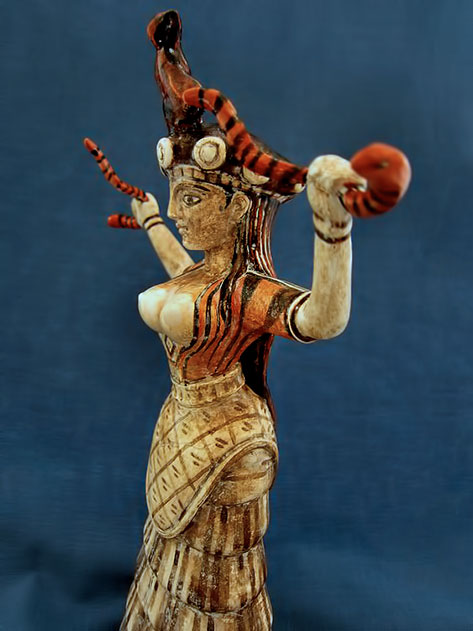
Minoan Snake Goddess
Minoan wall art
Circumstantial evidence indicates that women played a dominant role in Minoan religion and perhaps also in Minoan society. Some believe that the Minoans lived in a matrilineal, or even a matriarchal, society.
Heraklion Archaeological Museum, Crete
Minoan eight handled amphora
Pottery Jar with Octopus Design from Knossos, Crete. Late Minoan period II c.1450 1400 BC Fine Arts Reproduction
Wendy Shirran with a three handled Amphora she made – Palace style, white earthenware with stained slips and terra sigelata, Late Minoan II, 1450-1400 BCE
Libation vase (rhyton) of serpentine, in the shape of a bull’s head with inlays of shell, rock crystal and jasper in the muzzle and eyes. Knossos. New-Palace period (1600-1500 BC)
Minoan drinking vessel
Minoan Pitcher
Archeological Museum in Heraklion.
The priestess at the altar. Detail of the painting of the sarcophagus from Agia Triada
Minoan wall painting, Heraklion Archaeological Museum, Crete
1. The Boxer Rhyton. Steatite libation vase with relief scenes of boxing, wrestling and bull-leaping. Ayia Triada. New-Palace period (1500-1450 BC)
3. Steatite libation vase (rhyton), originally covered with gold leaf, with a relief representation of a shrine in a mountain landscape. Zakros. New-Palace period (1500-1450 BC)
( http://arctangent.smugmug.com )
Carved amphora vessel
Heraklion Archaeological Museum, Crete
Frieze of dolphins in the Cretan palace of Knossos
Spouted jar, Kamares Ware, Middle Minoan, 2000-1700 BC
Marine Style Ceramics of the Cretan-Minoan Neopalatial Period (c. 1650 BC to 1450 BC).
The Harvester Vase. Steatite ( soapstone ) libation vase (rhyton) with a relief scene of a procession of men led by a man holding a staff – an official or priest. They hold harvesting tools and sing to the accompaniment of the sistrum. New-Palace period (1500-1450 BC)
Kamares style vases with complex polychrome decoration, from Phaistos and Knossos.
Old-Palace Period (1800-1700 BC)
Minoan Amethyst Seal
Ashmolean Museum, Oxford University
Kamares style bridge-spouted Jug-1800-1700 BC
( Nicholas Kaye – Flickr )
Minoan vessel. Marine Style decoration. 1500 BC.
Cretan terracotta tripod from the Minoan Palace of Malia
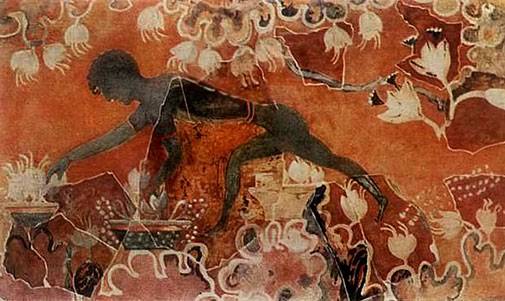
Collector of saffron. Fresco from the palace in Knossos. XVII century. BC.
Tonkrug Katsambas
Small Kamares ware jar, with bands and interconnected spirals,
Palaeopalatial Period (1900 – 1700 BC)
Heraklion Museum
Minoan Marble Bowl
Minoan Snake Goddess
Mycenaean fish and octopus pitcher
Minoan Gold Ring
Painted Kamares ware ewer or pitcher with three handles and relief spiky decoration,
Palaeopalatial Period (1900 – 1700 BC)
Heraklion Museum
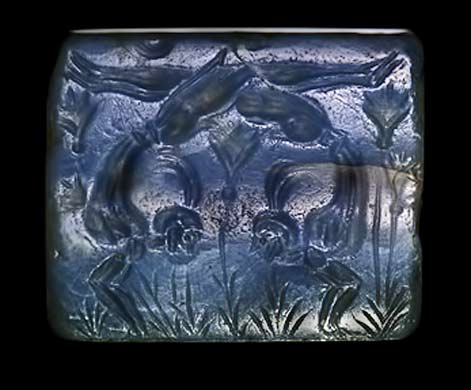
Acrobats – Minoan Chalcedony carving
Ashmolean Museum, Oxford Uni
Minoan Jug from Mochios
Labrys pithos – 1500BC
Knossos Palace
Update
Fresco of saffron gathering – Akrotiri, Thera
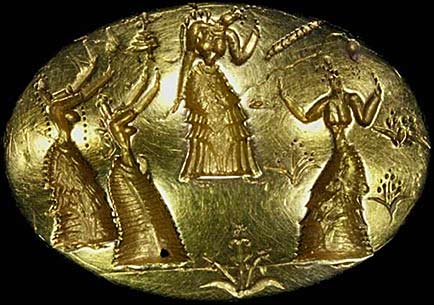
Ring of Isopata
1400–1500 BC
This famous Minoan gold ring from the Isopata tomb, near Knossos, depicts four dancing female figures, richly clad in characteristic Minoan attire, moving through a landscape of lilies. Three of them raise their arms in ecstasy, while the fourth one, placed in the centre of the scene and slightly higher than the others, makes a gesture – possibly of benediction. A fifth figure, much smaller than the others, appears to be descending from the sky ( top left ) and completes the composition together with other religious symbols frequently encountered on similar representations, such as the sacred eye, the snake and the chrysalis.
Minoan bronze stand, c.1400BC Cyprus, exhibited at The British Museum
Amphora vessel
Minoan Potnia – Goddess Of Animals – Theron, Minoa
Pot with palms – Konossos
Minoan solid gold pendant – Deity holding two birds
1700BC
Minoan teapot – Kamares
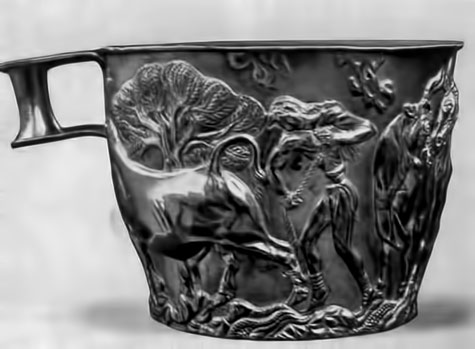
Gold Cup of Tolosa in Vafio with the image of taming wild bulls
1500-BC.
Small twin handled ‘Kamares’ bowl with labrys motif
Minoan, Gold Ornament in the form of a Bee
1700-1600 BCE
The British Museum
Minoan Priestess plaque
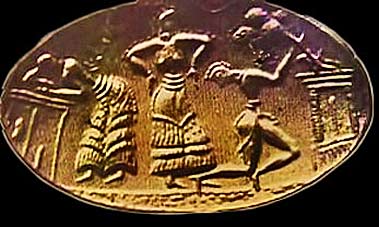
Gold Minoan ring with females dancing
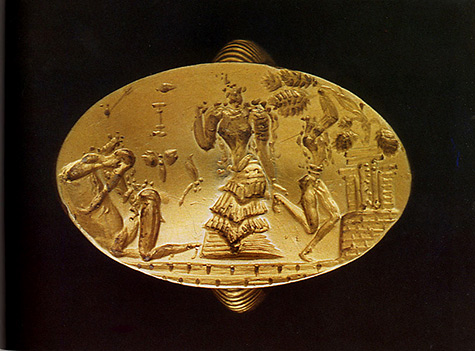
Minoan gold ring
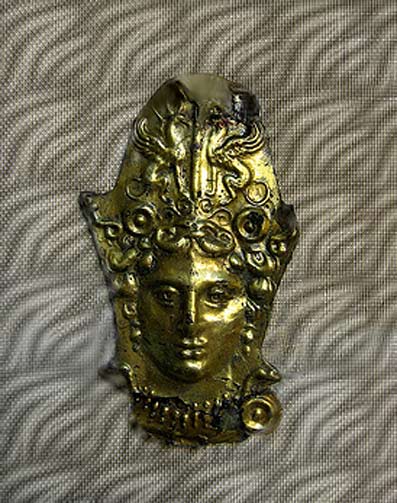
Gold goddess pendant
Heraklion Archaeological Museum, Crete
Templar-1307-flickr
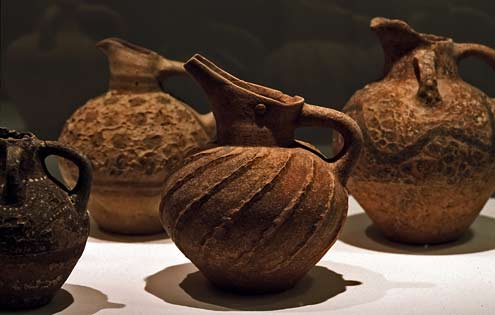
Minoan pottery pitchers
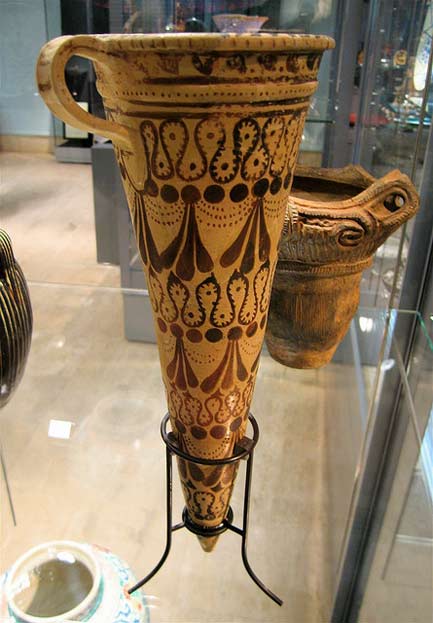
Minoan vase,
Ashmolean Museum, Oxford University
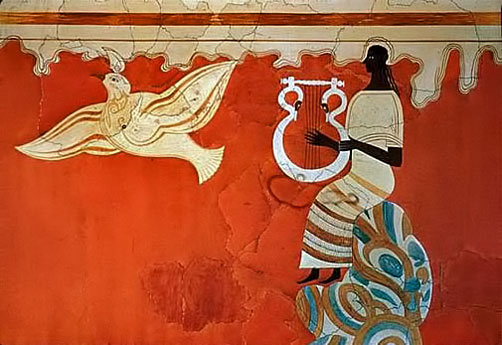
Pylos temple fresco – Minoan singer with lyre ( Orpheus)
XIII century. BC
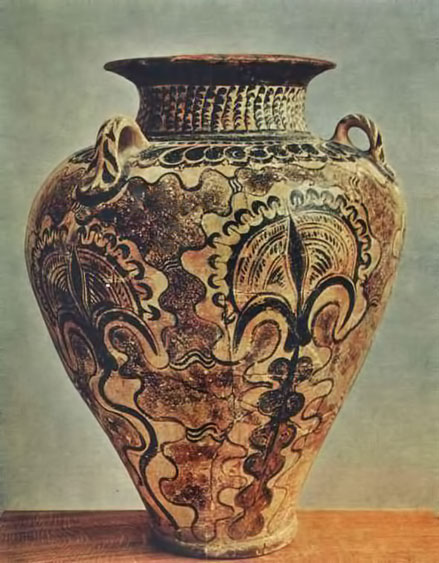
Minoan ceramic vessel with fleur de lis motifs

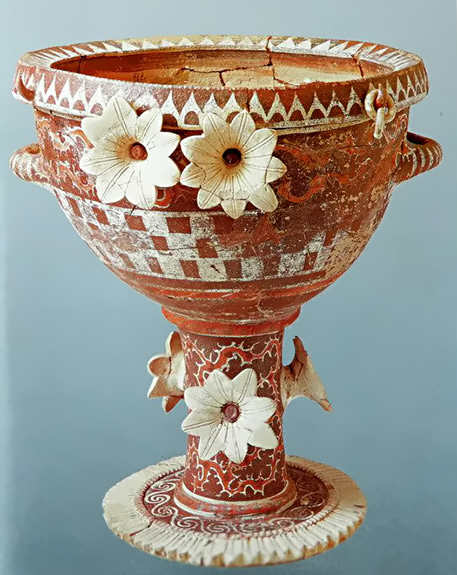
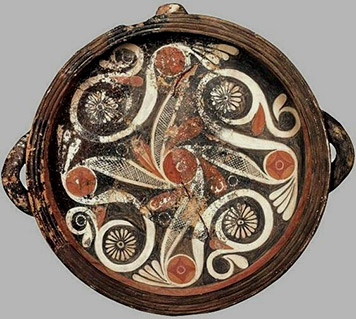
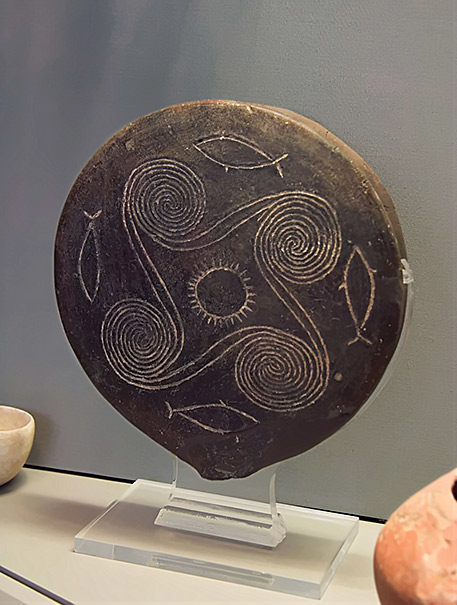
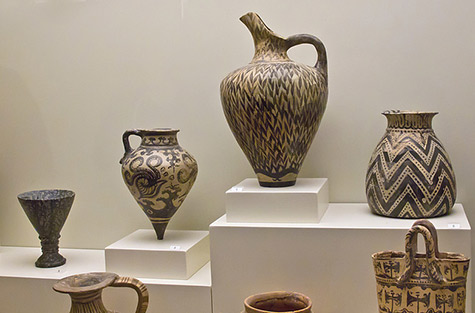
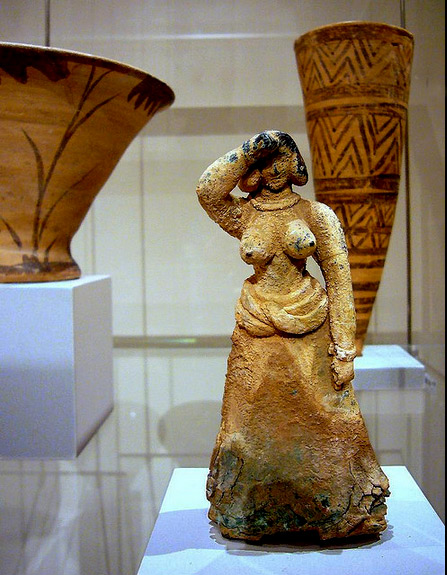
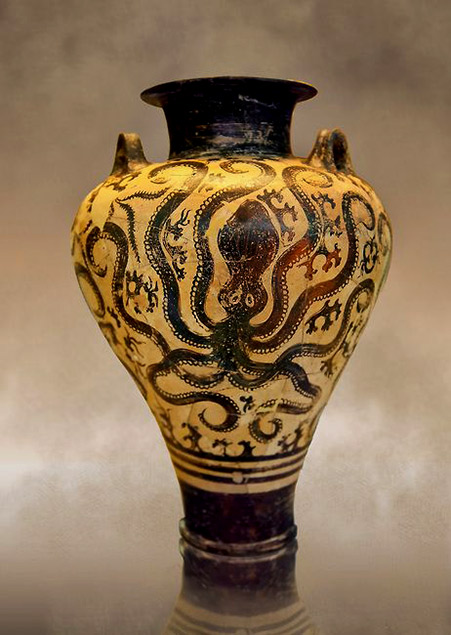
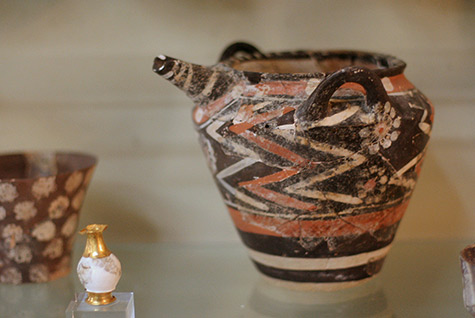
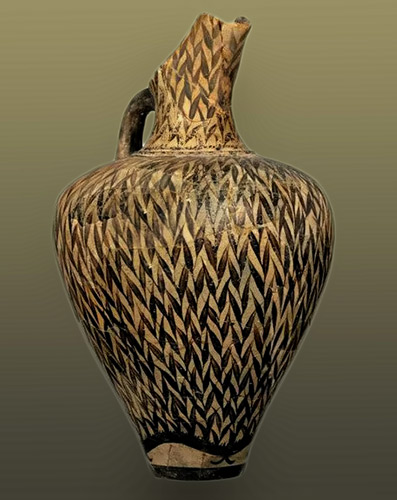
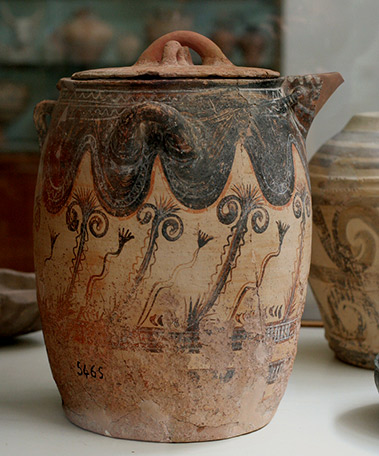
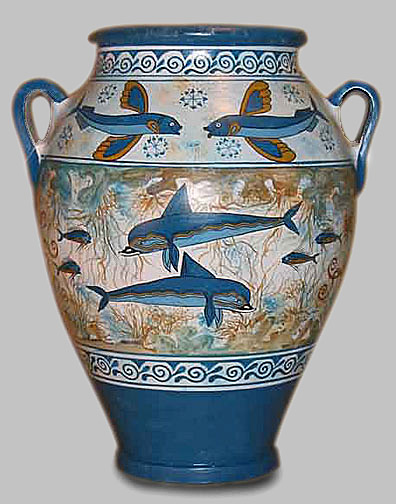
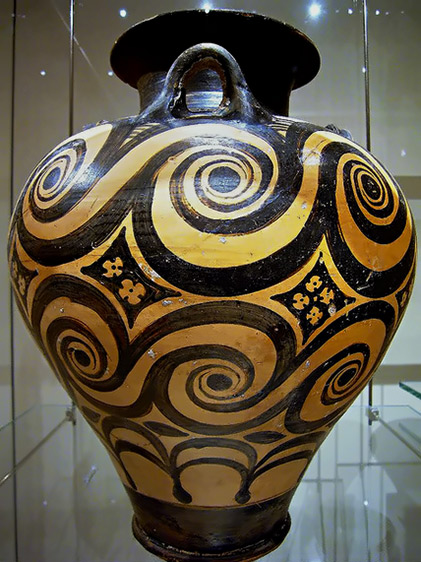
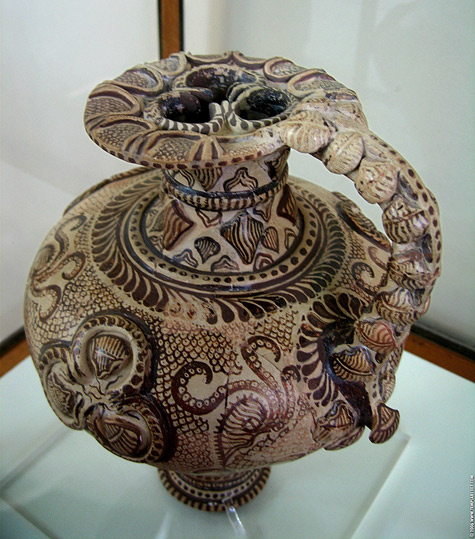
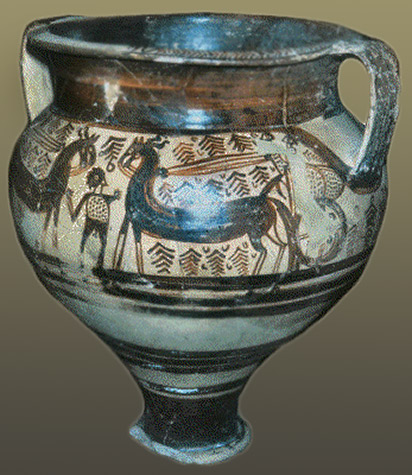
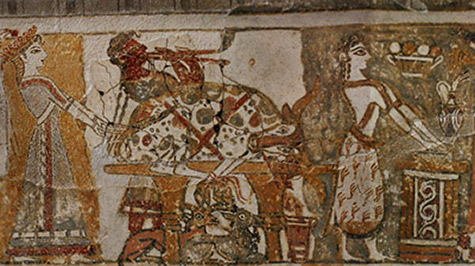
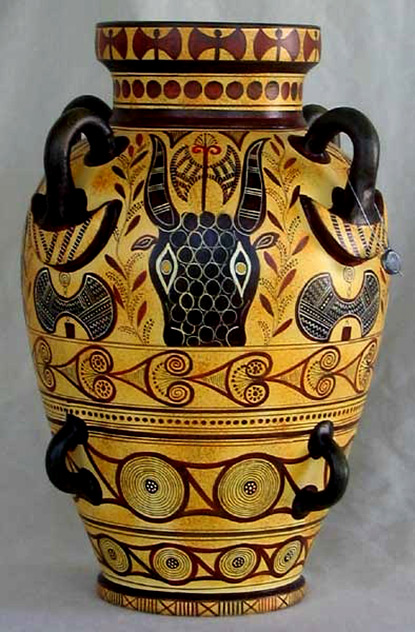
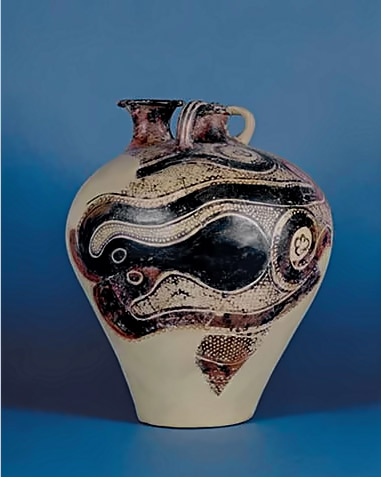
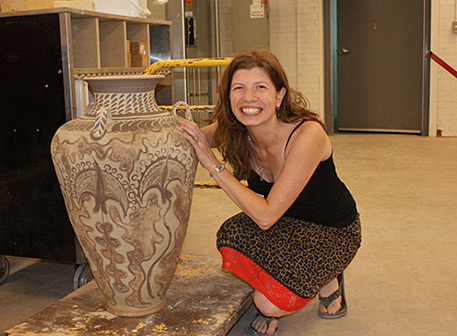
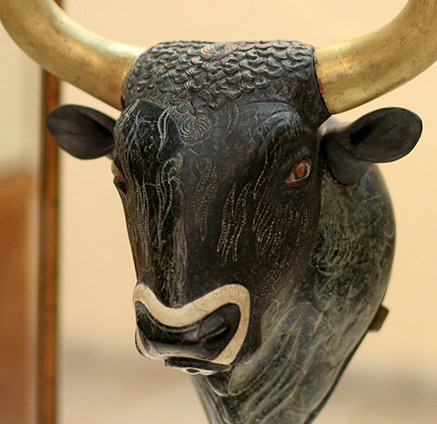
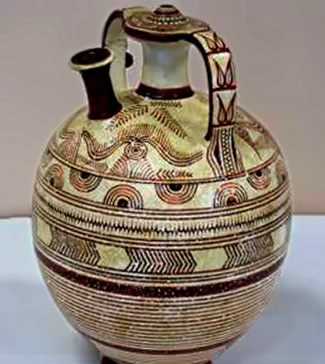
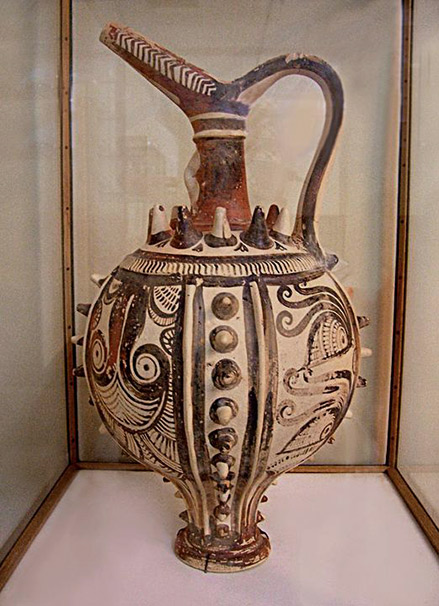
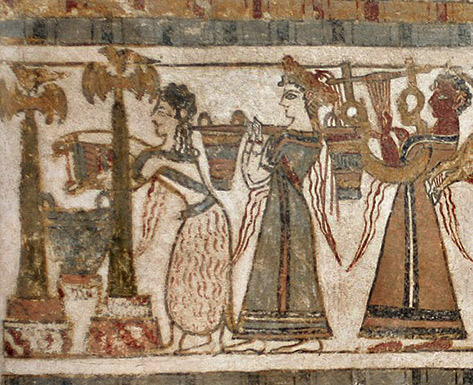
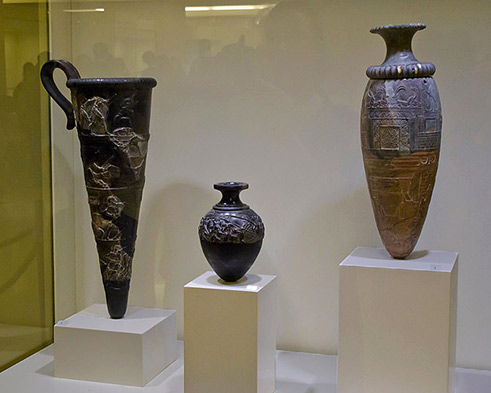
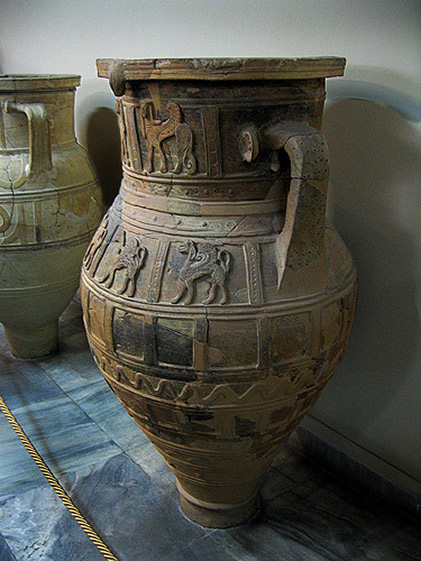
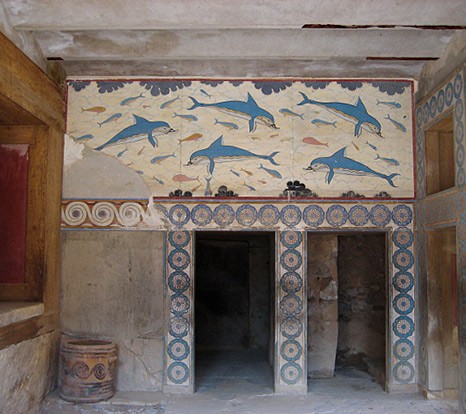

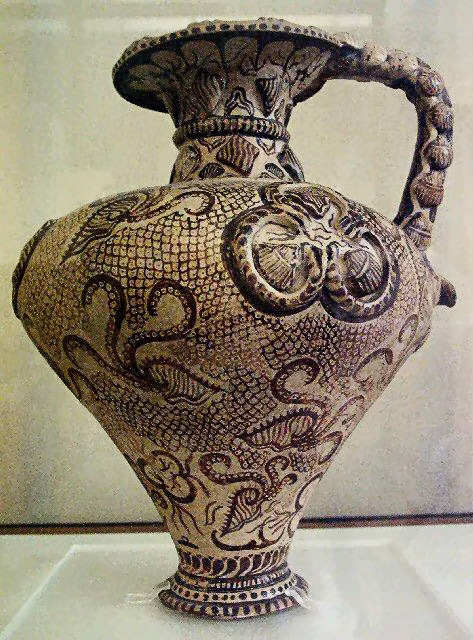
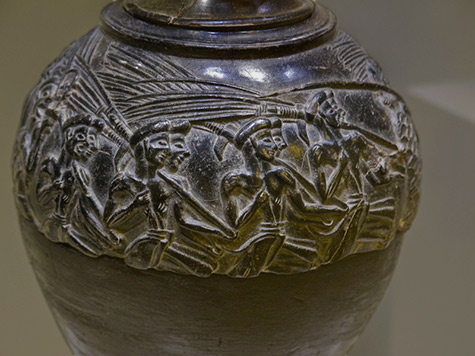
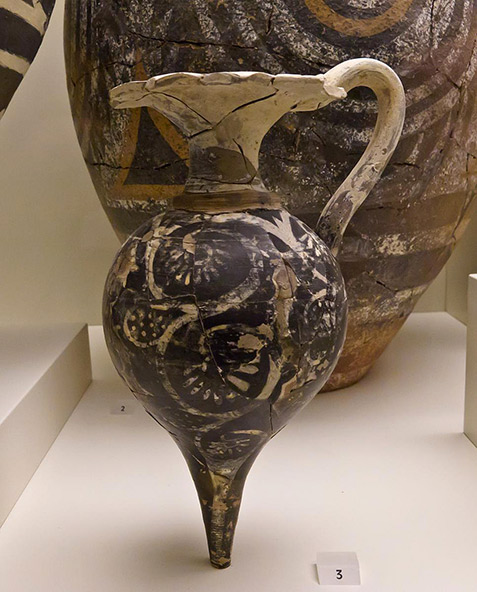
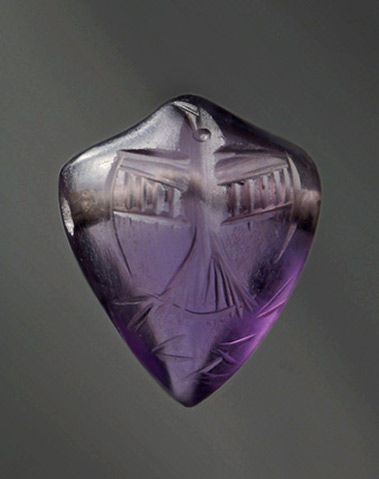
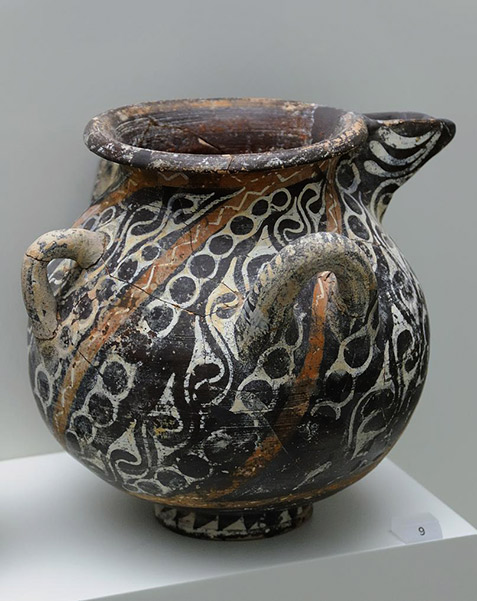
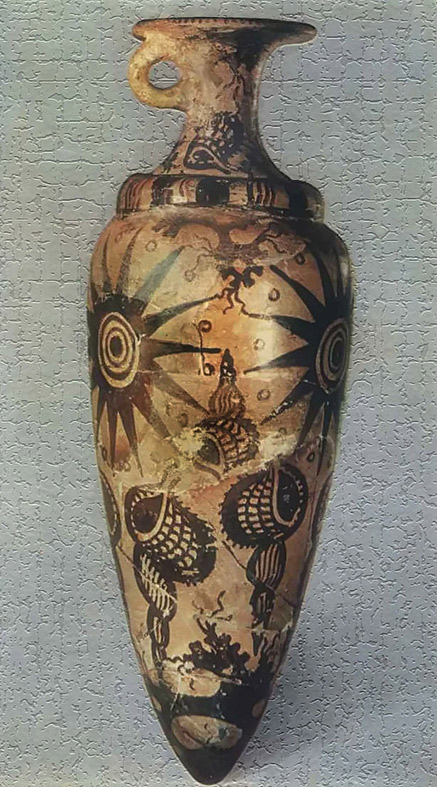
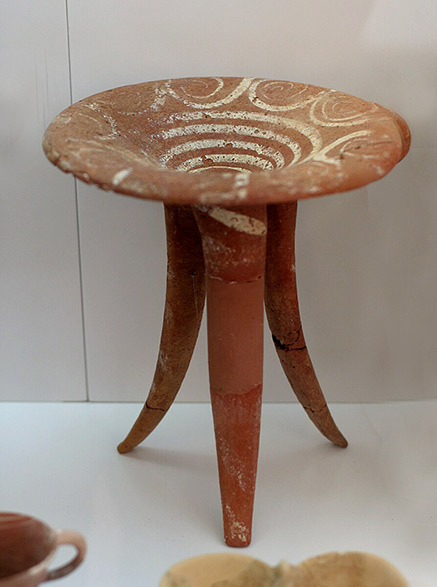
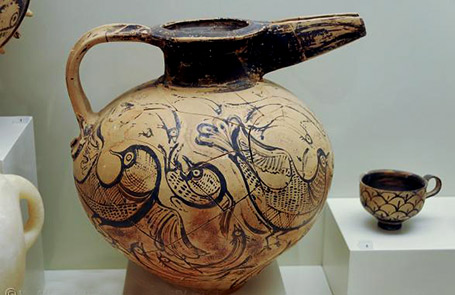
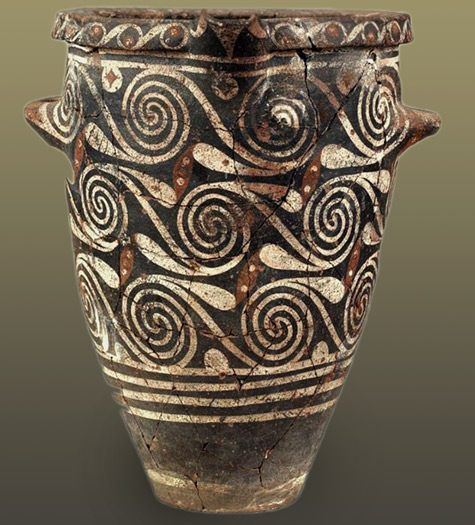
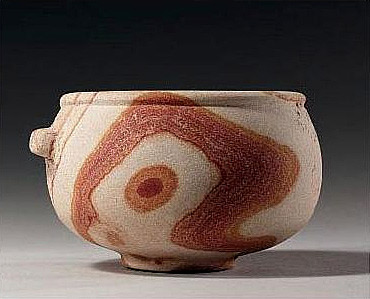
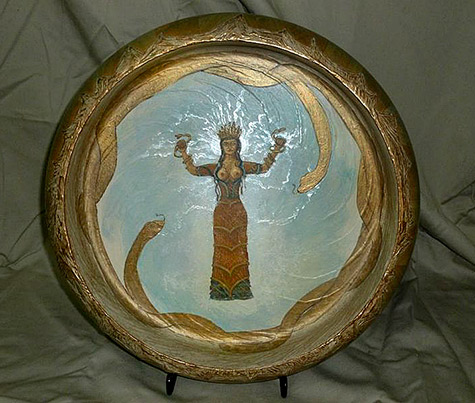
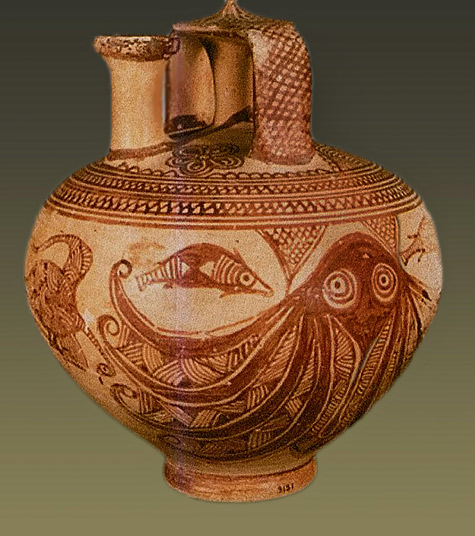
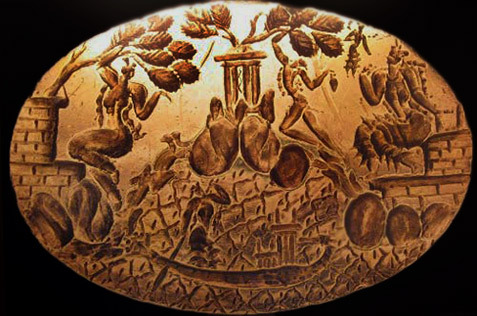
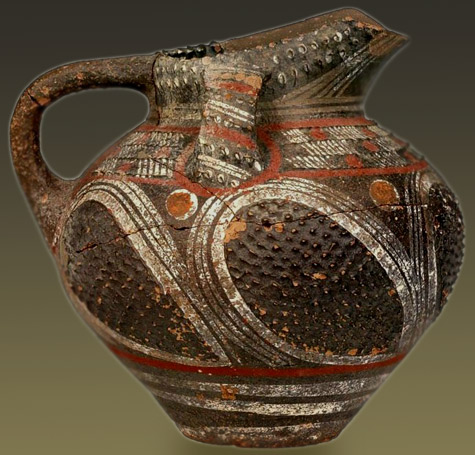
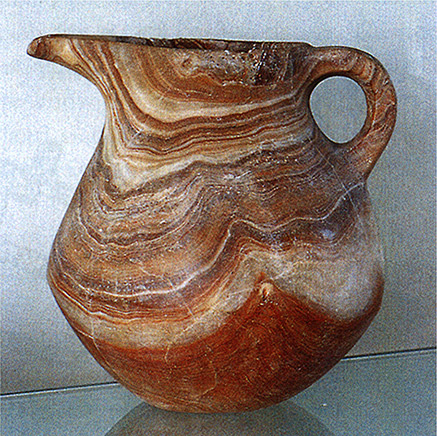
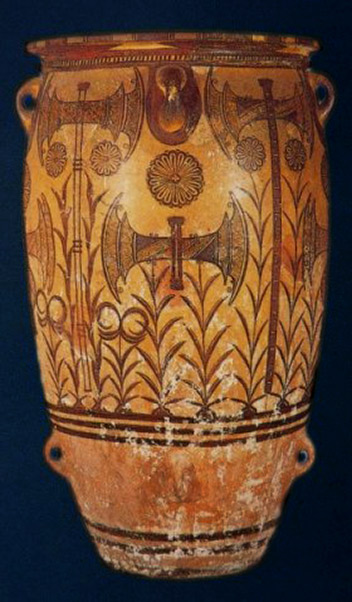
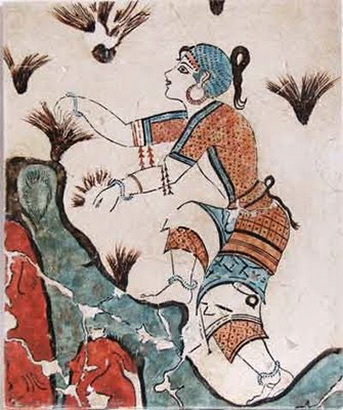
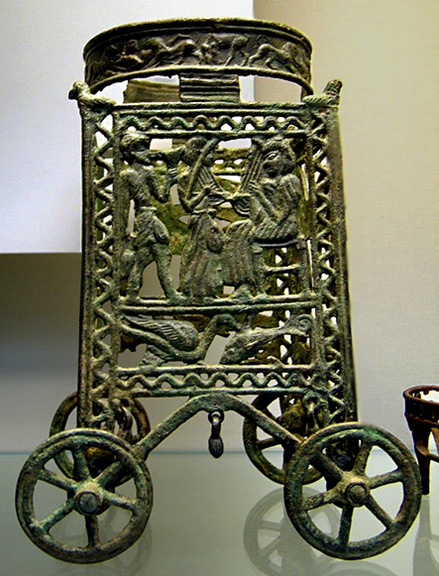
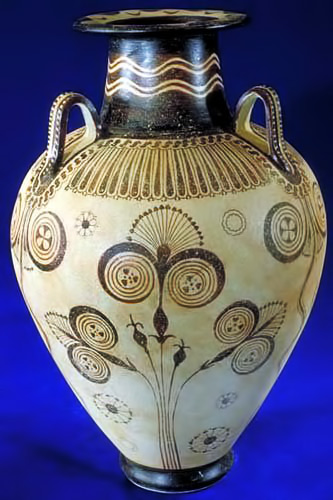
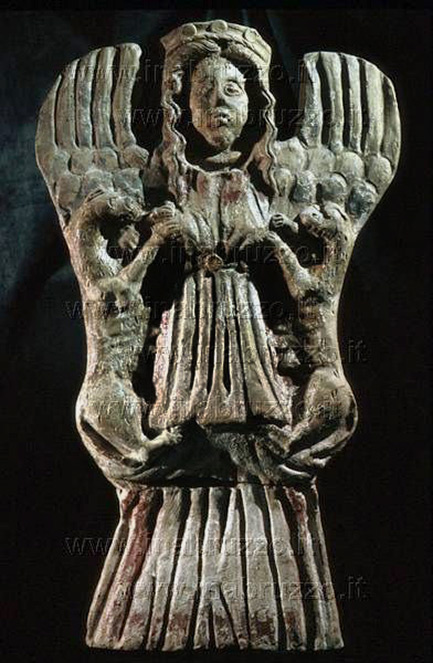
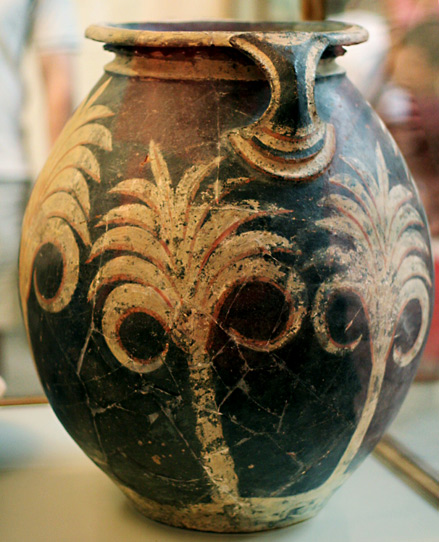
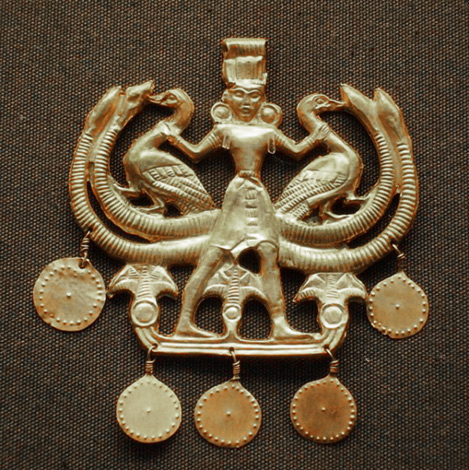
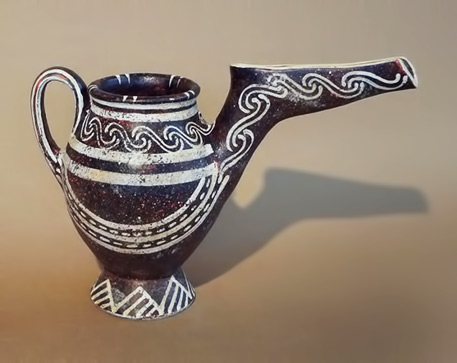
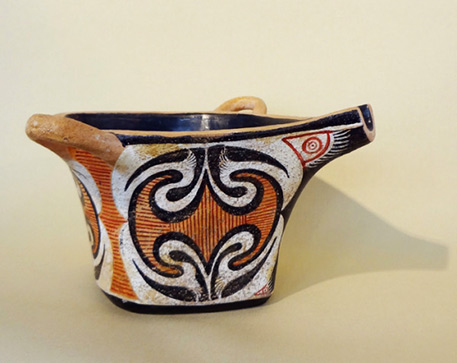
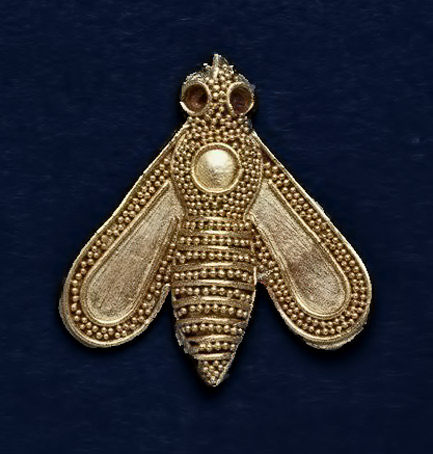
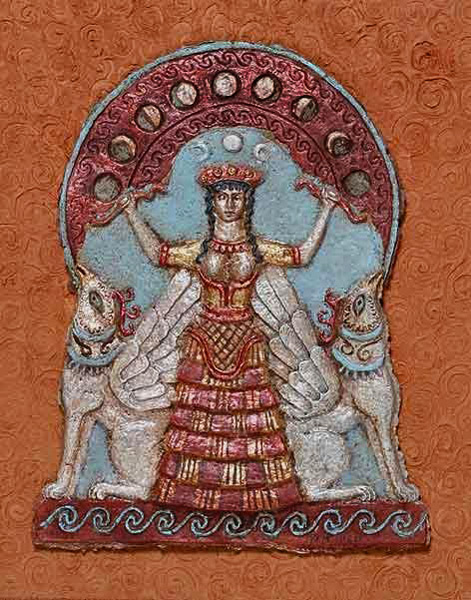

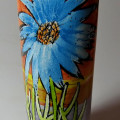


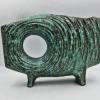
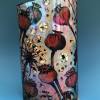
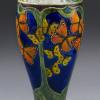

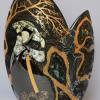
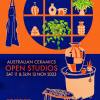
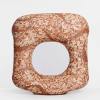
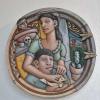

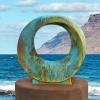

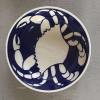

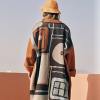
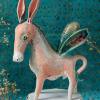
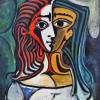

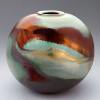
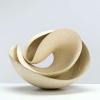
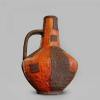
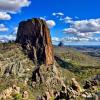
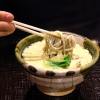
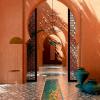
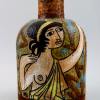
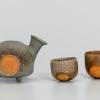
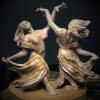
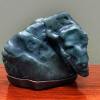
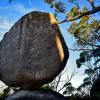
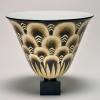

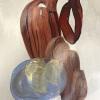

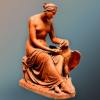

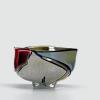
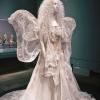
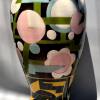
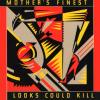
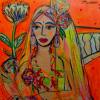
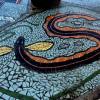
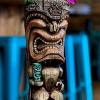
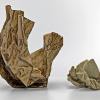
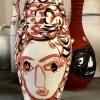
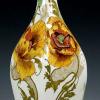


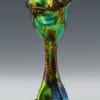
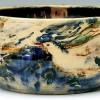
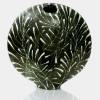

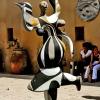
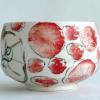
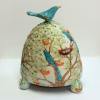

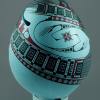
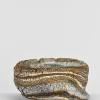
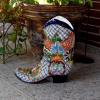
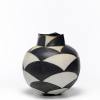
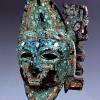
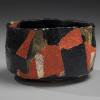
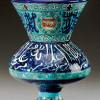

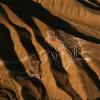
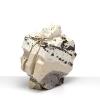

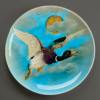
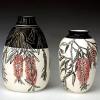
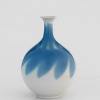
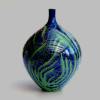
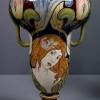
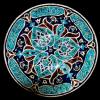
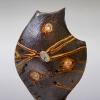
19 Comments
the fry pan is not minoan, it is Cycladic (Naxos 2800 b.c.)
Thank you Thanasis. All in all, a fabulous display of the culture I have believed to be the real Atlantis for more than 4 decades. We have so much to learn. The level achieved by these potters and decorators stands as masterwork no matter where or when. Is there any mention of these people in the Hittite libraries?
awesome thanks this helped me out alot with my social studies class
awesome thanks this helped me out
Very informative site. Can you tell me what the dates are for the third and fourth pieces depicting solar motifs?
Very informative site. Can you tell me what the dates are for the third and fourth pieces depicting solar motifs? AH,it’s ok, just found the dates.
lol needs more work m8
i made all the potteries
im awseome not…
THANASIS KATSARAS the cycladic people were Minoans. There is no cycladic civilization. Cycladic islands were colonies of the Minoans.
Its incorrect to deny Cycladic civilization. They have a unique and distinct culture especially the frying pans. Some sites like Akrotiri may show Minoan influence but even then there are distinct differences in the subject matter of their frescoes
that frying pan is not minoan.
why are you worked up about this
The spirals of the frying pan are very common in Minoan vessels.
Did the Cretens reach South America some of the Pottery look the same .
As they were a nation of seafarers it is possible, but the journey was around 10,000 km
I LOVE the artwork of this ancient civilization. I often look to the ancient past for inspiration.
Where can I find a high resolution version of the “Pylos temple fresco – Minoan singer with lyre ( Orpheus)” image?
Do we know the process by which they mined / created the clay. My daughter is doing a unit on the phaesos disc and we can’t find info on the process.
Hi Rachael, the Minoans primarily used Earthenware clays that were fired at low temperatures. The Phaistos Disc was made of a baked clay, probably in a terracotta. More than likely sourced locally at Phaistos.
One Trackback
[…] ‘Minoan Pottery’ […]